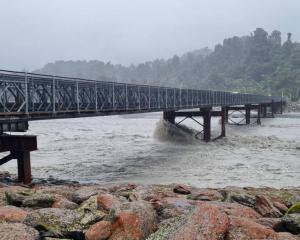
However, authorities say hospitals are well prepared for any spread of coronavirus Covid-19 and will transfer patients if needed - but the vast majority of those with the virus would recover from mild symptoms at home.
Recent "risk register" documents released to the Herald on Sunday show some DHBs monitored a lack of isolation facilities as a potential risk to patients and staff.
An entry by South Canterbury DHB recorded "potential health and safety risks to patients and staff within Timaru Hospital when we have an airborne isolation (eg measles, chicken pox, pandemic flu, TPB, disseminated shingles), due to there being no negative pressure rooms."
And the close proximity of patients, lack of isolation facilities and inability to care for multiple patients needing isolation in the emergency department worried MidCentral DHB based in Palmerston North.
It has nine negative pressure rooms, which use lower air pressure to prevent internal air from reaching the rest of the hospital, allowing patients with infectious conditions to be isolated.
Auckland City Hospital is using such a facility to treat the first confirmed New Zealand case of Covid-19. A New Zealand resident in their 60s had flown from Iran, via Bali, on Wednesday.
Authorities have reassured the public that New Zealand's hospitals are well prepared to cope with further cases, with the vast majority of people with Covid-19 able to recover from a mild illness at home.
There are 268 negative pressure rooms across the country. West Coast and South Canterbury DHBs don't have any, while Hawke's Bay and Lakes Hospital have one each.
Director-General of Health, Dr Ashley Bloomfield, said DHBs already worked cooperatively to manage illness and workload, and would do so if Covid-19 necessitated patient transfers.
"South Canterbury DHB's current facilities would likely be appropriate to manage many patients. However, if needed patients could be transferred to other centres able to provide more complex care. These decisions would be clinically made and led.
"We are still finding out a lot about Covid-19 but from what we currently know, it's clear that there would be many mild cases, who would be able to recover well at home, and there would be fewer moderate cases requiring advice and support from primary care. There would be a smaller number of serious cases requiring hospital level care and an even smaller number of critical cases requiring ICU or higher-level care."
If Covid-19 spreads in New Zealand it will put huge pressure on hospital facilities, particularly in winter months. The doctors and dentists union, the Association of Salaried Medical Specialists (ASMS), recently released a "Hospitals on the Edge" report that found many hospital wards were running at or over 100 per cent bed occupancy, when the widely accepted safe level was 85 per cent.
Planning for more demand in winter was already in place and would continue being worked on, Bloomfield said.
"The best thing the public can do is to keep themselves well is to practice good hand washing hygiene and cough etiquette [and] ensure they are scheduled in for a seasonal influenza vaccine when they are available in April."













